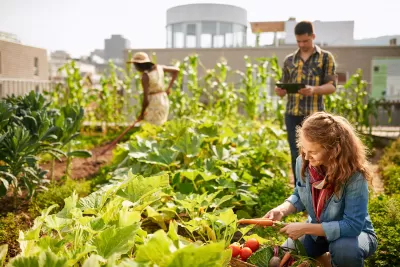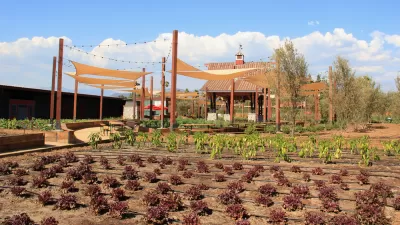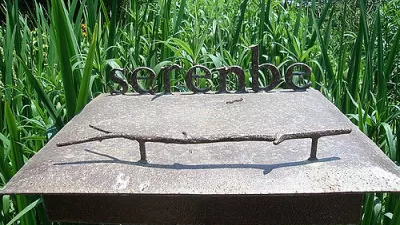Urban agriculture can provide green spaces, fresh food, and healthy activities, but urban gardeners and foragers face many obstacles.

“The concept of food production in urban areas has gained visibility in recent years in tandem with discussions of food insecurity, climate resilience, and equitable access to green space, but the challenge of understanding and representing such a diverse range of stakeholders persists.” In a piece for The Architect’s Newspaper, Melody Stein describes the steps New York City gardeners want the city to take to support their efforts.
New York’s newly established Mayor’s Office of Urban Agriculture (MOUA) is tasked with developing a strategic plan for supporting urban agriculture, and local gardeners have some suggestions that include tax rebates for buildings with agriculture projects that would be passed on to farmers and encouraging food production on green roofs, already mandated in some cases by the city’s sustainability initiatives.
The city can also take steps to eliminate current roadblocks to urban agriculture. “Growing or foraging edible foods in NYC Parks & Recreation–managed public space is currently illegal. The Bronx River Foodway is a pilot program that operates in exception to this rule and has allowed public foraging since 2017 to great success.” Cities can also support gardeners by providing assistance with setting up sustainable irrigation systems.
FULL STORY: A new generation of community gardeners have big goals for cultivating the concrete jungle

Manufactured Crisis: Losing the Nation’s Largest Source of Unsubsidized Affordable Housing
Manufactured housing communities have long been an affordable housing option for millions of people living in the U.S., but that affordability is disappearing rapidly. How did we get here?

Americans May Be Stuck — But Why?
Americans are moving a lot less than they once did, and that is a problem. While Yoni Applebaum, in his highly-publicized article Stuck, gets the reasons badly wrong, it's still important to ask: why are we moving so much less than before?

Using Old Oil and Gas Wells for Green Energy Storage
Penn State researchers have found that repurposing abandoned oil and gas wells for geothermal-assisted compressed-air energy storage can boost efficiency, reduce environmental risks, and support clean energy and job transitions.

Greening Oakland’s School Grounds
With help from community partners like the Trust for Public Land, Oakland Unified School District is turning barren, asphalt-covered schoolyards into vibrant, green spaces that support outdoor learning, play, and student well-being.

California Governor Suspends CEQA Reviews for Utilities in Fire Areas
Utility restoration efforts in areas affected by the January wildfires in Los Angeles will be exempt from environmental regulations to speed up the rebuilding of essential infrastructure.

Native American Communities Prepare to Lead on Environmental Stewardship
In the face of federal threats to public lands and conservation efforts, indigenous groups continue to model nature-centered conservation efforts.
Urban Design for Planners 1: Software Tools
This six-course series explores essential urban design concepts using open source software and equips planners with the tools they need to participate fully in the urban design process.
Planning for Universal Design
Learn the tools for implementing Universal Design in planning regulations.
Heyer Gruel & Associates PA
City of Moreno Valley
Institute for Housing and Urban Development Studies (IHS)
City of Grandview
Harvard GSD Executive Education
Salt Lake City
NYU Wagner Graduate School of Public Service
City of Cambridge, Maryland




























